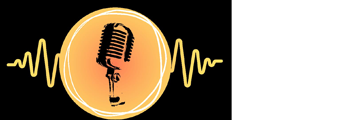Storyboarding and pre visualization tools and softwares help teams transform ideas into clear sequences before production begins. These platforms combine drawing, shot planning, camera logic, and timing so directors, animators, designers, and clients can align on intent early. The best options support collaboration, version control, and exports that flow smoothly into editing or 3D pipelines. They also provide templates, asset libraries, and camera presets that accelerate planning while maintaining creative flexibility. In this guide, Top 10 Storyboarding and Pre-Visualization Tools and Softwares List explains how established suites and modern apps reduce confusion, save time, and raise visual quality for beginners and advanced practitioners alike.
I. Toon Boom Storyboard Pro
Toon Boom Storyboard Pro is an industry standard for studios that require drawing precision and editorial control in one place. It combines vector and bitmap tools, layers, camera moves, and timeline editing, allowing you to block, time, and pitch sequences inside a single project file. Integrated animatics with audio let teams evaluate rhythm and screen direction early, while 2D camera control supports pans, zooms, and multiplane staging. Robust PDF, EDL, and image sequence exports keep editorial teams moving. Harmony integration simplifies downstream animation. For teams that want dependable pipelines, centralized asset management, and reliable review sessions, Storyboard Pro remains a trusted choice.
II. Wonder Unit Storyboarder
Wonder Unit Storyboarder is a fast, free tool that removes friction from the earliest passes of a board. The interface favors speed with simple drawing tools, six panel layouts, and easy keyboard shortcuts that help artists explore many ideas quickly. You can attach dialogue and notes, time panels, and export to Premiere or Final Cut for further edits. Shot generators and reference layers encourage iteration without technical complexity. Because the project format is lightweight, teams can pass files around freely. For independent creators and classrooms that value velocity, clarity, and cost effectiveness, Storyboarder is a practical platform for rough to refined boards.
III. Boords
Boords focuses on collaborative, browser based storyboarding that keeps clients and teams in sync. You can create panels with drawing tools or image uploads, add scripts, time frames, and share instant review links. Version history reduces confusion during approvals, while animatic features help you test pacing before edit. Its shot lists, frame numbering, and comment threads keep production tidy and auditable. Because it runs online, there is minimal setup and easy access for stakeholders. Export options include MP4 animatics and PDFs for presentations. Boords suits agencies, educational programs, and distributed teams that want structured collaboration without heavy desktop overhead.
IV. StudioBinder
StudioBinder extends storyboarding into a broader production platform that unifies shot lists, schedules, call sheets, and collaboration. Its storyboard module lets you assemble panels from uploads or sketches, define shot details like lens and movement, and automatically generate production friendly shot lists. Real time sharing keeps feedback centralized, while layouts and numbering preserve continuity between creative and logistics. Since the tool connects boards to scheduling and contacts, it bridges the gap between intention and execution. For teams that coordinate many deliverables across departments, StudioBinder provides a consistent source of truth that reduces duplication and keeps everyone aligned from pre production to wrap.
V. FrameForge
FrameForge is built for pre visualization with virtual cameras, characters, and sets that mirror real world production. You can block actors, set lens parameters, simulate depth of field, and plan moves that match physical rigs. Accurate measurements help cinematographers evaluate sight lines and lighting opportunities before stepping on set. Shot data exports simplify communication to grips, camera operators, and VFX. Because you can import reference images and build quick set layouts, the tool gives directors concrete options to compare. For complex scenes where camera choreography and spatial logic must be proven early, FrameForge delivers dependable previs grounded in craft.
VI. ShotPro
ShotPro brings 3D pre visualization to mobile and desktop with an emphasis on speed and accessibility. You can stage characters, props, lights, and cameras in minutes using a built in library, then add animation and audio to visualize beats. The interface favors direct manipulation, so directors can test blocking and coverage without deep technical training. Quick renders communicate intent to crews and clients, while project sharing simplifies review. Because the app lowers the barrier to 3D thinking, it helps teams identify problems with geography, scale, and movement early. ShotPro is well suited to commercials, music videos, and indie film planning.
VII. Previs Pro
Previs Pro focuses on fast iPad based shot planning that blends boards, lens math, and camera diagrams. You can sketch frames, choose lenses and sensor sizes, and visualize fields of view on location. Overlays show camera height and tilt, helping directors and cinematographers confirm composition choices before shooting. Scene and shot metadata stay organized, enabling clean handoffs to the crew. Exports include PDFs and videos for pitches or edit references. Because it lives on set friendly hardware, it works for scouts and rapid iteration. Previs Pro benefits teams that need to bridge creative boards with precise technical framing decisions.
VIII. Blender with Grease Pencil
Blender offers a powerful open source path for both storyboarding and previs through Grease Pencil, cameras, and 3D scenes. Artists can draw directly in 3D space, combine hand drawn panels with simple geometry, and animate timing for animatics. Because the rendering pipeline is flexible, you can test lighting and camera moves early, then decide what becomes final. Add ons and community resources provide templates, rigs, and scripts that accelerate production. For teams that want zero license cost, custom workflows, and an upgrade path into full animation or VFX, Blender delivers a unified environment from rough boards to sophisticated previs.
IX. Unreal Engine for Previs
Unreal Engine enables real time pre visualization with cinematic depth, helping teams evaluate lighting, lenses, and motion with immediate feedback. Virtual cameras, sequencer timelines, and built in post effects allow realistic previews of scenes, while Marketplace assets speed up environment building. With live link and virtual production features, directors can explore blocking and coverage interactively and capture previs shots at high frame rates. Because Unreal supports collaborative workflows and version control, it scales from small teams to large stages. For productions that benefit from real time iteration and near final visuals, Unreal provides a future facing previs backbone.
X. Cine Tracer
Cine Tracer is designed by a cinematographer to teach and practice shot design through an intuitive real time sandbox. Users place lights, cameras, and talent quickly, then evaluate exposure and composition like a live set. The interface prioritizes practical filmmaking concerns such as gear placement, eyelines, and movement, making it a strong bridge between concept and shoot. Because it runs in real time, directors can experiment with coverage and lighting setups rapidly and record playbacks for edit references. Cine Tracer is valuable for education, pitch decks, and pre production workshops where clear demonstration of cinematography choices drives better outcomes.

